#gods and generals
Text

“There’s a whole segment of the audience who know me as Ike Clanton from Tombstone. They don’t care about Avatar! There’s people who love me for my Civil War films, then occasionally some guy will come up to me and say, ‘I loved Band of the Hand!’
“You know, when I meet someone like that, I know they were 14 when they saw it. They’re not necessarily great films, but we saw them at the absolute right time in our life, and it’ll be with us forever. You never really know where it’s gonna be. I hope I do many more films over the next 20 years that other people will know me from or whatever. It’s what I do! It’s what you wanna do as an actor, keep making films.” Stephen Lang, 2022
#I love this he’s so right#we often find the films we need exactly when we need them#that’s how I found steve all those years ago 🥹#stephen lang#slang#tombstone#avatar#colonel miles quaritch#band of the hand#gettysburg#gods and generals#*#quote
129 notes
·
View notes
Text
after I told my history teacher I really liked killer angels he got super excited and loaned me his personal copy of gods and generals. it’s not homework but I’ll be damned if I don’t finish this the weekend
4 notes
·
View notes
Text
"GODS AND GENERALS" (2003) Review

"GODS AND GENERALS" (2003) Review
In 1993, producer Ted Turner and director Ronald Maxwell released "GETTYSBURG", a film adaptation of Michael Shaara's 1974 novel, "The Killer Angels". Shaara's son, Jeffrey, wrote a prequel to his novel called "Gods and Generals" in 1996. Both Turner and Maxwell teamed up again in 2002-2003 to make a film adaptation of the latter novel.
Set between April 1861 and May 1863, "GODS AND GENERALS" related the American Civil War events leading up to the Battle of Gettysburg. Although the movie began with Virginia-born Robert E. Lee's resignation from the U.S. Army, following his home state's secession from the Union; the meat of the film focused on the personal and professional life of Confederate general Thomas "Stonewall" Jackson during those two years. It also touched on how Bowdoin College professor Joshua L. Chamberlain became second-in-command of the 20th Maine Volunteer Infantry Regiment, his military training and his experiences during the Battle of Fredricksburg. But trust me . . . most of the movie is about Jackson. It covered his departure from the Virginia Military Institute; his experiences with the famous "Stonewall Brigade"; his experiences at the Battle of Bull Run; his relationships with both his wife Mary Anna, his servant Jim Lewis and a five-year-old girl from an old Virginia family; and his experiences at the Battle Chancelorville.
"GODS AND GENERALS" had its virtues. One of them turned out to be Michael Z. Hanan's production designs. Hanan and his team did a superb job in re-creating Virginia of the early 1860s. I was especially impressed by their recreation of mid-19th century Fredricksburg during that famous battle in December 1862. I wonder who had the bright idea of using Harper's Ferry, West Virgina for that particular setting. Hanan's work was ably supported by Kees Van Oostrum's photography and Gregory Bolton's art direction. Oostrum's photography and Corky Ehlers' editing was also put to good use during the Fredricksburg battle sequence. And I really enjoyed the costumes designed by Richard La Motte, Maurice Whitlock and Gamila Smith. All three did their homework in re-creating the fashions and uniforms of the period. Unlike "GETTYSBURG", "GODS AND GENERALS" featured major female characters. I suspect this gave the trio the opportunity to indulge their romantic streak with crinolines and hoop skirts galore.
There were some admirable performances in "GODS AND GENERALS". Frankie Faison gave a warm performance as Thomas Jackson's freedman cook, Jim Lewis. I was also impressed by Brian Mallon's subtle portrayal of the concerned Major General Winfield Hancock, a role he had first portrayed in the 1993 film. It is a pity that Bruce Boxleitner did not receive more screen time for his role as Lieutenant General James Longstreet. He had taken over the role from Tom Berenger and gave a pretty solid performance. But alas, he did not receive enough time to do anything with the role. Alex Hyde-White gave an interesting portrayal of Major General Ambrose Burnside, whose decisions led the Union Army to disaster at Fredricksburg. Matt Letscher was very memorable as the 20th Maine's founder and first regimental commander, Colonel Adelbert Ames. I could also say the same for Mira Sorvino's portrayal of Frances "Fanny" Chamberlain, Colonel Chamberlain's passionate and pessimistic wife. In fact, I believe she had the good luck to portray the most interesting female character in the movie.
So . . . what about the other performances? What about the stars Stephen Lang, Jeff Daniels and Robert Duvall? I am not claiming that they gave bad performances. Honestly, they did the best they could. Unfortunately, all three and most of the other cast members had the bad luck to be saddled with very uninteresting characterizations, bad dialogue and self-righteous speeches. In other words, I found them a little BORING!!! I am sorry, but I truly did.
First of all, Lang's Thomas Jackson dominated the film just a little too much. Why bother calling this movie "GODS AND GENERALS"? Why not call it "THE LIFE AND TIMES OF STONEWALL JACKSON"? Even worse, Jackson is portrayed in such an unrelenting positive light that by the time the movie came around to his fate after the Battle of Chancelorville, I practically sighed with relief. Jeff Daniels' Joshua Chamberlain did nothing to rouse my interest in his story. In fact, he disappeared for a long period of time before he made his reappearance during the Battle of Fredricksburg sequence. And his appearance in that particular sequence was completely marred by him and other members of the 20th Maine Volunteer Regiment quoting William Shakespeare's "JULIUS CAESAR", while marching toward Marye's Heights. Oh God, I hate that scene so much! As for Robert Duvall's Robert Lee . . . what a waste of his time. Ronald Maxwell's script did not allow the actor any opportunity to explore Lee's character during those two years leading to Gettysburg. I realize this is not Duvall's fault, but I found myself longing for Martin Sheen's portrayal of the Confederate general in "GETTYSBURG".
There is so much about this movie that I dislike. One, Maxwell's portrayal of the movie's two main African American characters - Jim Lewis and a Fredricksburg slave named Martha, as portrayed by actress/historian Donzaleigh Abernathy - struck me as completely lightweight. Now, I realized that there were black slaves and paid employees who managed to maintain a friendly or close relationship with their owner or employer. But in "GODS AND GENERALS", Lewis seemed quite friendly with his employer Jackson and Martha seemed obviously close to the family that owned her, the Beales. I could have tolerated if Lewis or Martha had been friendly toward those for whom they worked. But both of them? I get the feeling that Maxwell was determined to avoid any of the racial and class tensions between the slave/owner relationship . . . or in Lewis' case, the employee/employer relationship. How cowardly.
In fact, this lack of tension seemed to permeate all of the relationships featured in "GODS AND GENERALS". Aside from one Union commander who berated his men for looting in Fredricksburg, I can barely recall any scenes featuring some form of anger or tension between the major characters. Everyone either seemed to be on his or her best behavior. And could someone please explain why every other sentence that came out of the mouths of most characters seemed to be a damn speech? I realize that Maxwell was trying to re-create the semi-formality of 19th century American dialogue. Well . . . he failed. Miserably. The overindulgence of speeches reminded me of the dialogue from the second NORTH AND SOUTH miniseries, 1986's "NORTH AND SOUTH: BOOK II". But the biggest problem of "GODS AND GENERALS" was that it lacked a central theme. The majority of the movie seemed to be about the Civil War history of Thomas Jackson. But the title and Shaara's novel told a different story. However, I do not believe a detailed adaptation of the novel would have done the trick. Like the movie, it lacked a central theme or topic.
Perhaps I am being too arrogant in believing I know what would have made the story worked. After all, it is not my story. Jeff Shaara was entitled to write it the way he wanted. And Ronald Maxwell was entitled to adapt Shaara's story the way he wanted. But I do know that if I had written "GODS AND GENERALS", it would have been about the Battle of Fredricksburg. It turned out to be the only part of the movie that I found interesting.

#jeff shaara#gods and generals#gods and generals 2003#thomas stonewall jackson#stonewall jackson#stephen lang#joshua lawrence chamberlain#jeff daniels#robert e. lee#robert duvall#battle of bull run#battle of fredericksburg#battle of chancelorville#alex hyde-white#brian mallon#mira sorvino#kali rocha#matt letscher#bruce boxleitner#coooper huckabee#malachy mccourt#john castle#jeremy london#patrick gorman#bill campbell#royce d applegate#frankie faison#w. morgan sheppard#kevin conway#c. thomas howell
3 notes
·
View notes
Text
Actual footage of 8 yo me suffering in the cold during a dressage lesson

5 notes
·
View notes
Text
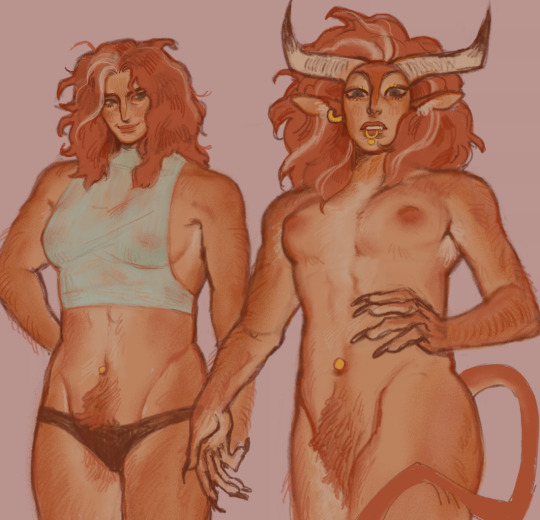


im busy with an art trade but wanted 2 share some recent scraps of charlie. i haven't posted abt her in years oh my god
#nudity cw#my art#art#illustration#drawing#artists on tumblr#digital art#my ocs#oc#ocs#original character#charlie#charlie raine quill#god i need to change her name. n update her in general . CRY
37K notes
·
View notes
Text
Bro, I don't even really like Gods and Generals (the movie), and I was forced to watch it during my Civil War class.
But I honestly love the fact that J.E.B. Stuart was the most fruity man when meeting Jackson at the beginning of the movie.
1 note
·
View note
Text
So my family has a Gay Pirate Plate.
Stay with me.
We do not know how the hell the Gay Pirate Plate was first acquired. This being a point of contention is actually pretty plot-relevant; the saga of the Gay Pirate Plate began with my grandmother and her sister, who, for some ungodly reason, both BADLY wanted the Gay Pirate Plate and believed it to be rightfully theirs.
I should back up, firstly, to establish: The Gay Pirate Plate is the cheapest, tackiest, ugliest plate in existence.
It is in no way a collector’s item. It is physically impossible for it to complement anyone’s decor, because the colors in it are garish. It’s just a ceramic plate with a gay pirate painted on it, and the painting is, this cannot be emphasized enough, extremely bad.
(How do we know the pirate is gay if he’s just posing on a plate? Listen. Fully 100% to stereotype, but he is. He is gay. There’s an energy. That pirate is a flaming homosexual. That pirate has sex with men and does it frequently. That pirate is fucking gay, all right, he just is.)
Anyway. The point is that this is an extremely cheap and ugly plate with a poorly-executed painting of pirate on it who is like a nine on the Kinsey scale.
My grandmother and her sister fought a blood feud over this plate for their entire lives. It would be on the wall in my grandma’s house, and then her sister would visit, and then it would be gone. She’d visit her sister and the plate would be on the wall and her sister would pretend it had always been there. She would steal it back, hang it up, and, when her sister visited, pretend it had always been there. This continued for DECADES.
When the sister died, the Gay Pirate Plate lived triumphantly in my grandmother’s house. And then my grandmother died. And my aunt, who had lived with her and been her carer throughout her life, rightfully inherited their house.
We visit my aunt after the funeral and stay with her for a week or two.
Me, my sister, and our dad. Her brother.
The three of us look at each other. We don’t say anything. We studiously avoid making eye contact with the Gay Pirate Plate mounted proud and ugly on the wall. We notice one another studiously avoiding looking at it. We notice one another noticing. We say nothing. We come to a silent consensus. We pack up to leave. We get in the van. Our aunt comes out to say goodbye. I loudly announce I need to use the restroom before we leave. She obviously stays outside to continue talking to my dad.
I take down the Gay Pirate Plate, stuff it under my oversized sweatshirt, go outside, and get in the van. She happily waves goodbye as we drive off.
Two days later my dad gets a phone call that opens with hysterical laughter and “You FUCKING ASSHOLE did you seriously STEAL THE PLATE--”
Anyway. The gay pirate plate lives in my dad’s house currently.
But he’s trying to get me and my sister out to visit him. And plate mounts are cheap.
#gay pirate plate#GOD i wish I had a picture#y'all are not prepared for the gay pirate plate#anyway we don't think my dad should have to miss out on our hijinks#we think he would much prefer to be alive to witness the nonsense#than for us to morbidly wait until he dies to begin the third generation of Gay Pirate Plate
104K notes
·
View notes
Text
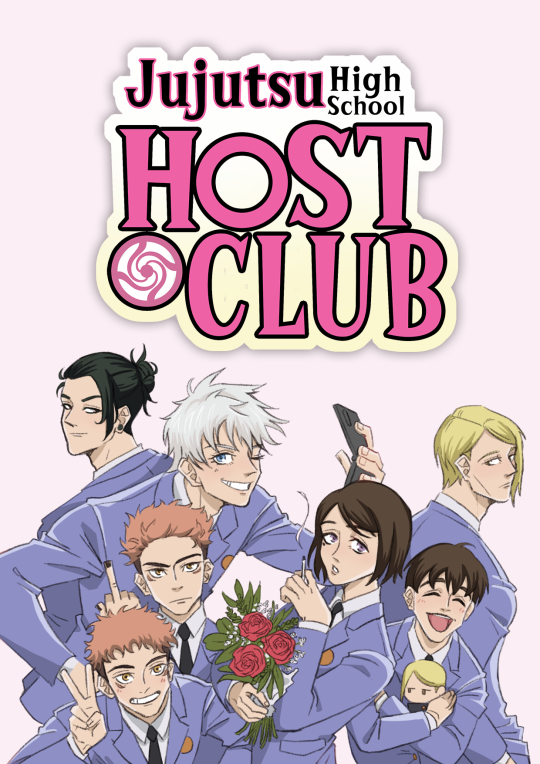
This week's Discord Prompt!
JJK X OHSHC
Find @cocoabell drawing here
#warning! hc dump in the tags#it just FITS SO WELLL EXCUSE ME#like satoru is such a obnoxious brat he fits tamaki so well#oh if gege was one generation younger i swear to god he'd state ooch as his inspo instead of hxh and macros#and shoko being haruhi??? same unbotherednes it just fits#geto being Mom??? AHAHHAHAHAHA#mommy and daddy present lmao#ah and haibara and nanami AAAAAAAAAA#yuji just simply fits because of sukuna#im on a rewatch with cocoabells and we're having the time of our lifes#jjk#fanart#jujutsu kaisen#gojo satoru#shoko ieiri#geto suguru#yuji itadori#sukuna#nanami kento#yu haibara#ouran high school host club#crossover#au#IPMSSA_Tokyo5!Fanart
3K notes
·
View notes
Text
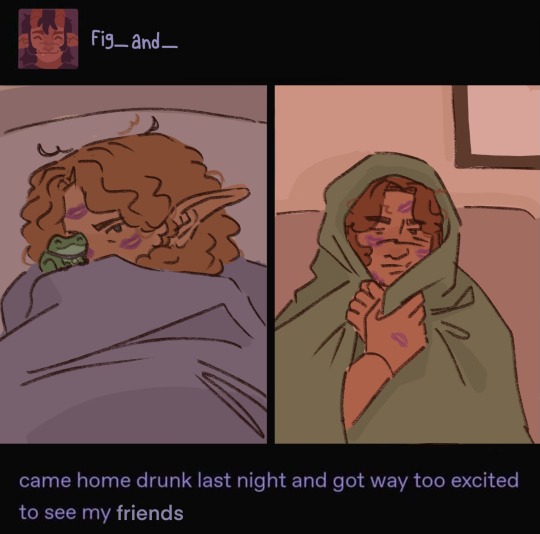
Average fig post on crystalbook or whatever they call it
#Adaine looks so pissed off. sorry girl.#that wasn’t intentional she’s just sleepy#it was actually supposed to just be Kristen at first but I like the idea that fig is just a friend kisser in general#so Adaine is here too#fantasy high#d20#d20 fantasy high#dimension 20#d20 fanart#adaine abernant#adaine o'shaughnessey#kristen applebees#kristen fantasy high#fig faeth#fig fantasy high#my god do they not have a trio name?#I have been devastated over and over to learn that other people don’t care about them as much as I do#fantasy high fanart#fh#fhjy#d20 fh#dimension 20 fantasy high#not described#my art
2K notes
·
View notes
Text

sorry my first dunmeshi post is so out of left field but i was rotating some ideas about how izutsumi would be in a timeline where she was adopted early on by senshi (inspired heavily by @dunmestuffy’s art!) and thought others might enjoy it
#dungeon meshi#dunmeshi#izutsumi#(izutsumi)#gravesyart#kitty kitty cat cat …..#oh god do i have to tag this as spoilers for the anime only crowd. lmk if i do#also my reason for never dunmeshposting till now is that. im not good at capturing their distinguishing facial features/body shapes/etc#and itd drive me crazy to post a wildly inaccurate looking laios or whatever. like a real generic shutterstock white man laios
2K notes
·
View notes
Note
im a sollux kinnie and ur art is great. like a delicious meal. 1 million courses. my compliments to the chef.
AOGHHH TYSM I REALLY APPRECIATE IT

in gratitude i present a little guy doing setup for the first time 🐝
#FR MEANS A LOT TO ME THANKYOU 🥲🙏 the chef analogy is so sweet too i love it#apologies i take a while to answer asks.. generating ideas#ask#anon#homestuck#sollux captor#2023#vioart#now im curious to know#question for sollux appreciators at any point in time -#was there any specific moment that made u connect w him most?#like for me it was when he became relieved and happy after the voices stopped#as someone plagued by 24/7 internal monologue. being "free from the voices” sounded absolutely euphoric to me LMAO#watching him talk abt finally being able to think clearly and hear his own thoughts...... gOD. MY BIGGEST ENVY OF HOMESTUCK.
2K notes
·
View notes
Text


#he was so hot in these movies gd bless#feels like a lifetime ago#stephen lang#slang#photos#gods and generals#2000s#*
69 notes
·
View notes
Text
carefully traversing through decked out 2 (tumblr) with a compass in hand (a renchanting post), trying to avoid the unavoidable clank (posting shit in martyn’s tag). i drop the compass (press post on tumblr), find the precious artefact (notes on the renchanting post), and try to make my way out alive. heartbeat racing, clank accumulating, hazards shutting down my path— and then BOOM a ravager jumpscare (martyn has reblogged your post). i am instantly killed and scurry back to the lobby (private discord server) like a scared animal
#renchanting#trafficblr#is this anything#also don’t tag him oh my god i didn’t tag him for reasons#ria.txt#also this is just a general post lmao nothing happened recently#mcyt
4K notes
·
View notes
Text

one day, in a thousand years
#I THINK I HAUVE COVID#oh to meet your love after a thousand years at a museum exhibit of your past lives#thinking about them makes me so sick so ILL DISEASED#I AM NOT IMMUNE#spc i’m cursing u forever for this wtf. WTF bro wtf#ouyang’s last thoughts were a desperate plea for esen to wait for him.#he has NEVER called him by first name he has NEVER asked him anything#and his last thought is asking him to wait#and esen does. bc he would have given ouyang anything he asked for#god i hope u get rawed so good it makes up for all the lost lifetimes u earned it#he who drowned the world#she who became the sun#the radiant emperor#general ouyang#esen-temur#(zhu also present in the golden imperial dragon and the golden light of gayness that brought them together again)#my art#not super proud of how it turned out tbh tbh it looks better in my head 😔😔#would’ve stayed in the drafts if not for my need to feed this 4 ppl fandom#and if not for robin motivation nfngdjfb ty kissa you forever#id in alt text
3K notes
·
View notes
Text
if only the inquisitor going into the fade and discovering that their actions didn’t have divine legitimacy actually held any narrative weight
#text#specifically in relation to the sacrifice cos it’s like ok who’s this guy to play god and say who lives and dies#but also just like. In general
6K notes
·
View notes
Text
So I accidentally almost got into an argument on Twitter, and now I'm thinking about bad historical costuming tropes. Specifically, Action Hero Leather Pants.
See, I was light-heartedly pointing out the inaccuracies of the costumes in Black Sails, and someone came out of the woodwork to defend the show. The misunderstanding was that they thought I was dismissing the show just for its costumes, which I wasn't - I was simply pointing out that it can't entirely care about material history (meaning specifically physical objects/culture) if it treats its clothes like that.
But this person was slightly offended on behalf of their show - especially, quote, "And from a fan of OFMD, no less!" Which got me thinking - it's true! I can abide a lot more historical costuming inaccuracy from Our Flag than I can Black Sails or Vikings. And I don't think it's just because one has my blorbos in it. But really, when it comes down to it...
What is the difference between this and this?
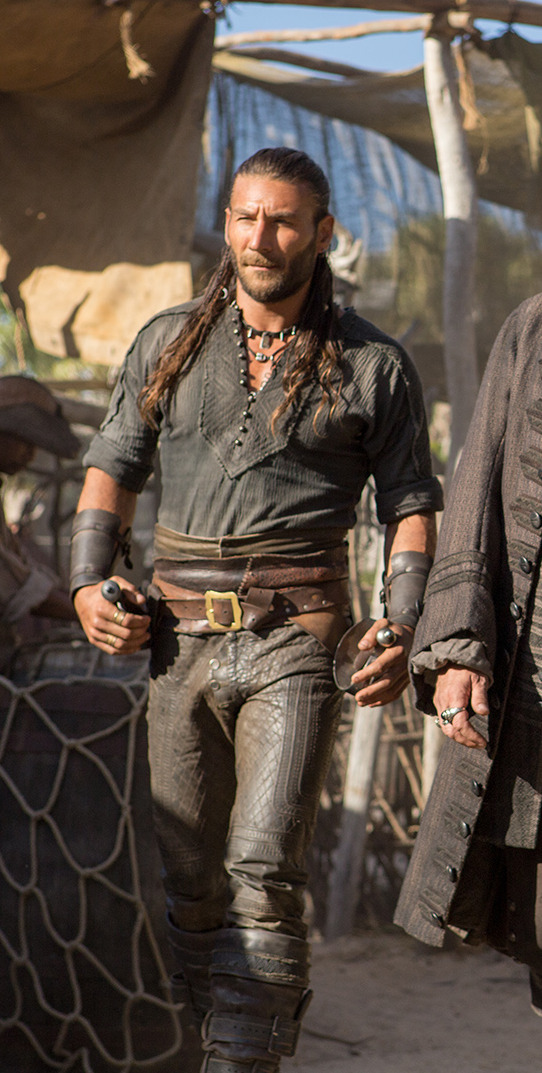
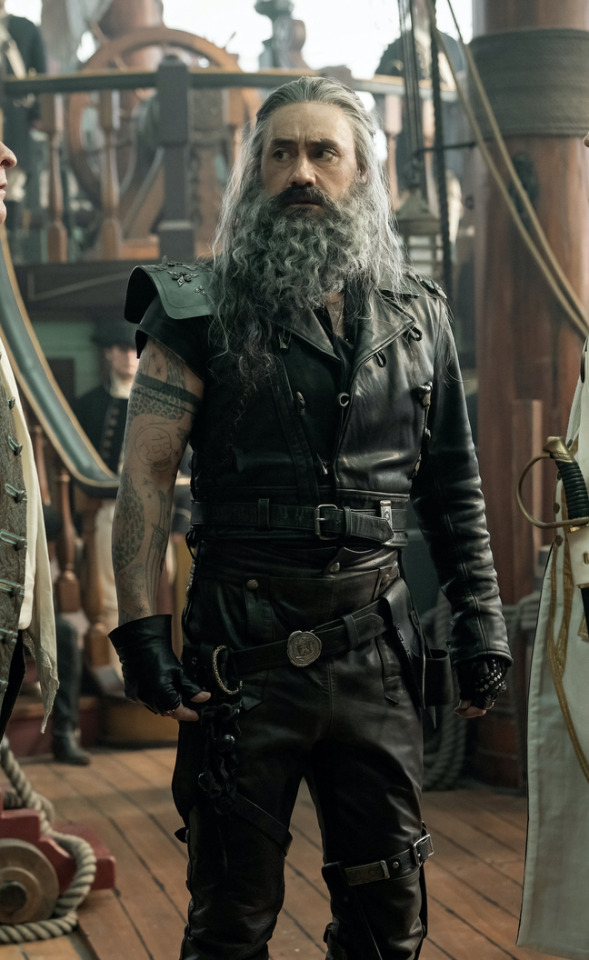
Here's the thing. Leather pants in period dramas isn't new. You've got your Vikings, Tudors, Outlander, Pirates of the Caribbean, Once Upon a Time, Will, The Musketeers, even Shakespeare in Love - they love to shove people in leather and call it a day. But where does this come from?

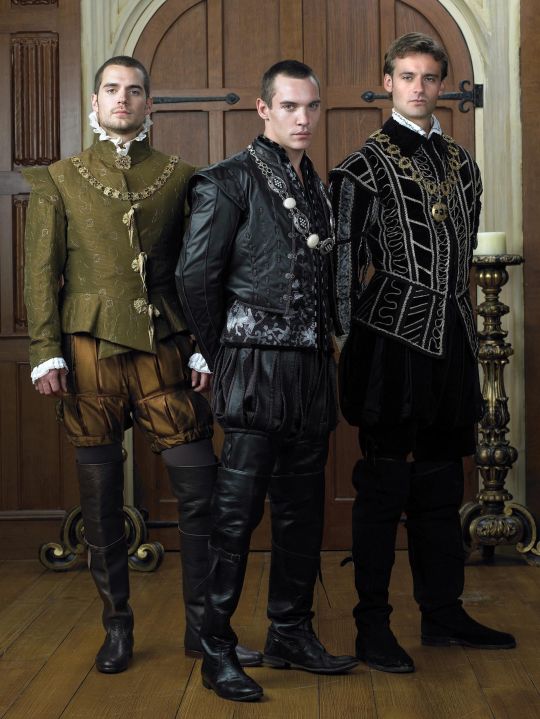
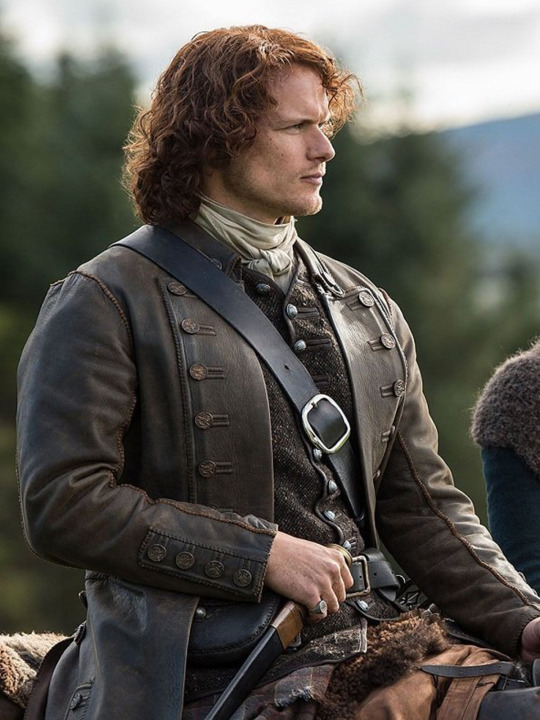

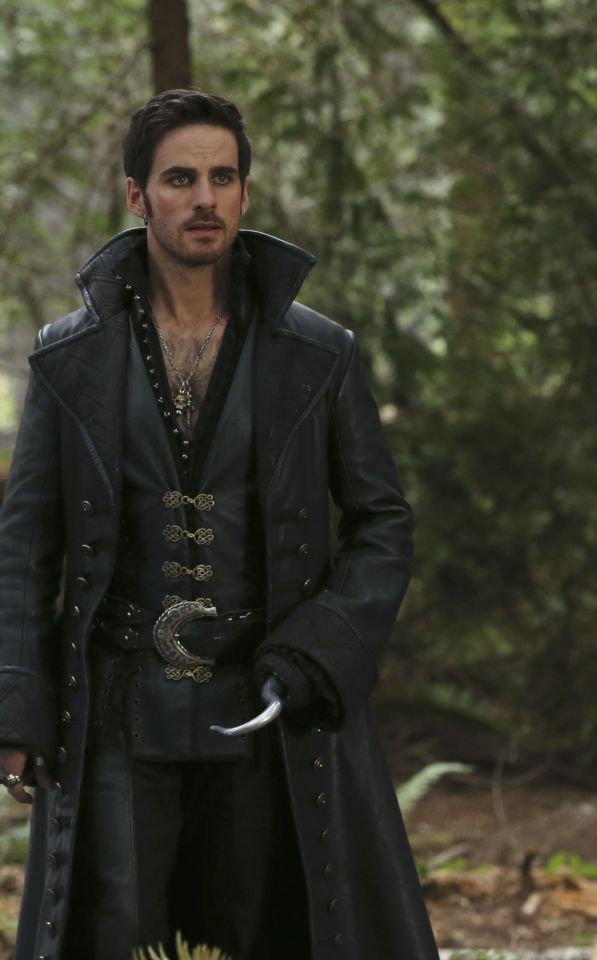
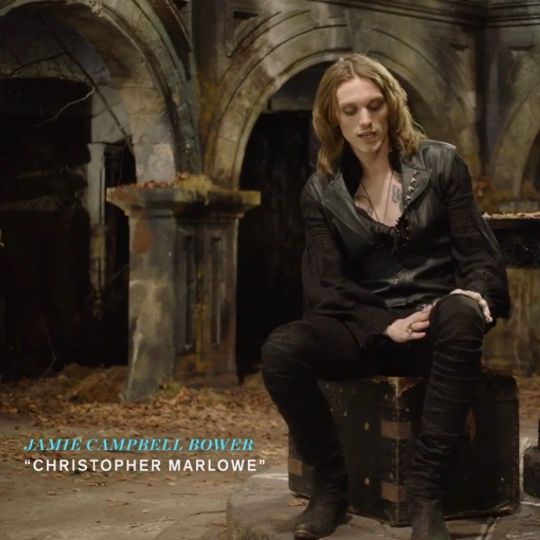
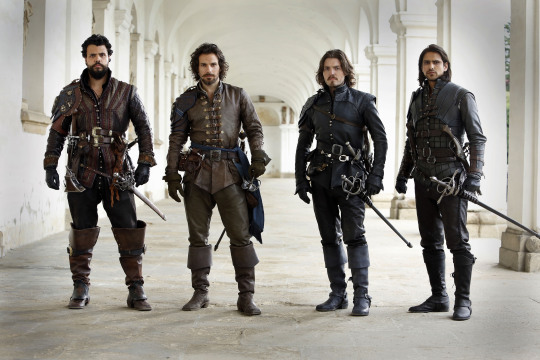

Obviously we have the modern connotations. Modern leather clothes developed in a few subcultures: cowboys drew on Native American clothing. (Allegedly. This is a little beyond my purview, I haven't seen any solid evidence, and it sounds like the kind of fact that people repeat a lot but is based on an assumption. I wouldn't know, though.) Leather was used in some WWI and II uniforms.
But the big boom came in the mid-C20th in motorcycle, punk/goth, and gay subcultures, all intertwined with each other and the above. Motorcyclists wear leather as practical protective gear, and it gets picked up by rock and punk artists as a symbol of counterculture, and transferred to movie designs. It gets wrapped up in gay and kink communities, with even more countercultural and taboo meanings. By the late C20th, leather has entered mainstream fashion, but it still carries those references to goths, punks, BDSM, and motorbike gangs, to James Dean, Marlon Brando, and Mick Jagger. This is whence we get our Spikes and Dave Listers in 1980s/90s media, bad boys and working-class punks.


And some of the above "historical" design choices clearly build on these meanings. William Shakespeare is dressed in a black leather doublet to evoke the swaggering bad boy artist heartthrob, probably down on his luck. So is Kit Marlowe.
But the associations get a little fuzzier after that. Hook, with his eyeliner and jewellery, sure. King Henry, yeah, I see it. It's hideously ahistorical, but sure. But what about Jamie and Will and Ragnar, in their browns and shabby, battle-ready chic? Well, here we get the other strain of Bad Period Drama Leather.
See, designers like to point to history, but it's just not true. Leather armour, especially in the western/European world, is very, very rare, and not just because it decays faster than metal. (Yes, even in ancient Greece/Rome, despite many articles claiming that as the start of the leather armour trend!) It simply wasn't used a lot, because it's frankly useless at defending the body compared to metal. Leather was used as a backing for some splint armour pieces, and for belts, sheathes, and buckles, but it simply wasn't worn like the costumes above. It's heavy, uncomfortable, and hard to repair - it's simply not practical for a garment when you have perfectly comfortable, insulating, and widely available linen, wool, and cotton!
As far as I can see, the real influence on leather in period dramas is fantasy. Fantasy media has proliferated the idea of leather armour as the lightweight choice for rangers, elves, and rogues, a natural, quiet, flexible material, less flashy or restrictive than metal. And it is cheaper for a costume department to make, and easier for an actor to wear on set. It's in Dungeons and Dragons and Lord of the Rings, King Arthur, Runescape, and World of Warcraft.

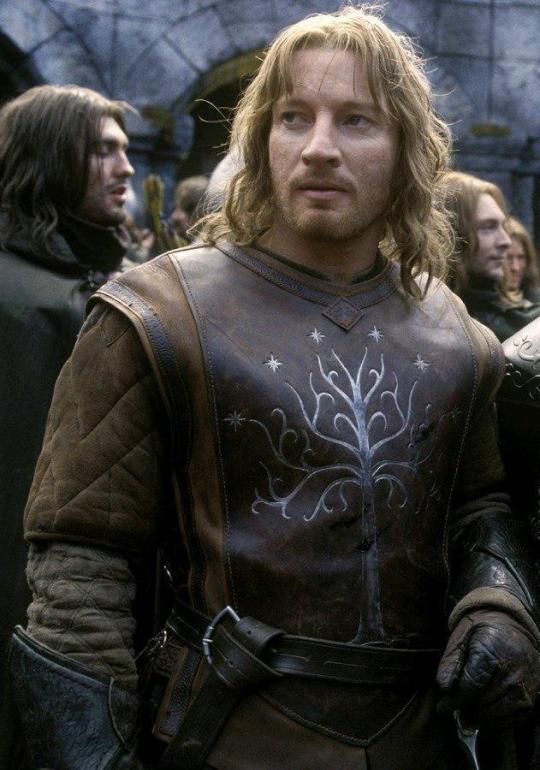
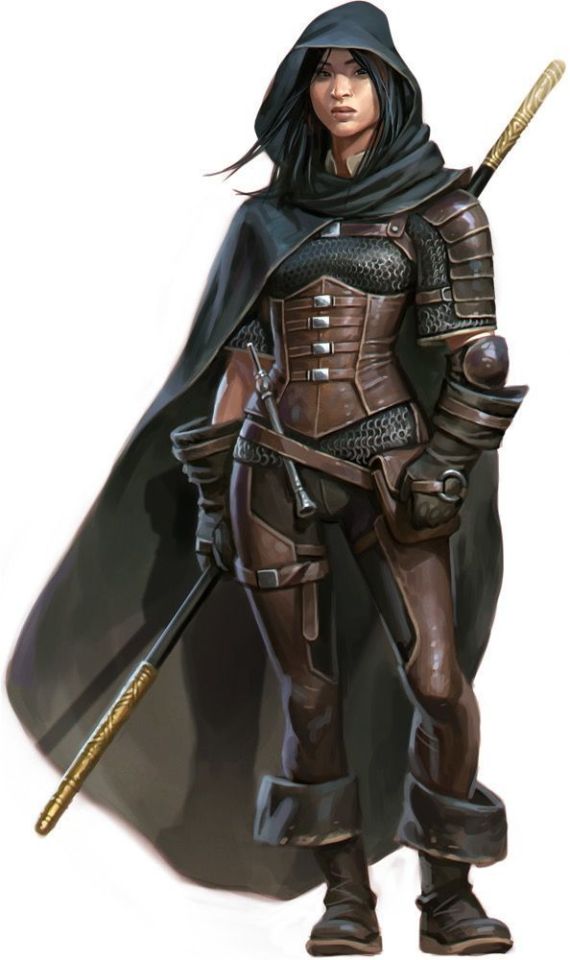
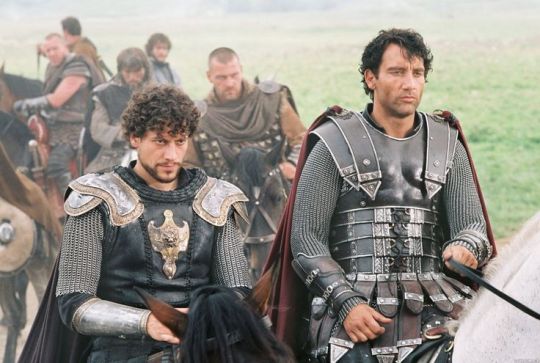

And I think this is how we get to characters like Ragnar and Vane. This idea of leather as practical gear and light armour, it's fantasy, but it has this lineage, behind which sits cowboy chaps and bomber/flight jackets. It's usually brown compared to the punk bad boy's black, less shiny, and more often piecemeal or decorated. In fact, there's a great distinction between the two Period Leather Modes within the same piece of media: Robin Hood (2006)! Compare the brooding, fascist-coded villain Guy of Gisborne with the shabby, bow-wielding, forest-dwelling Robin:

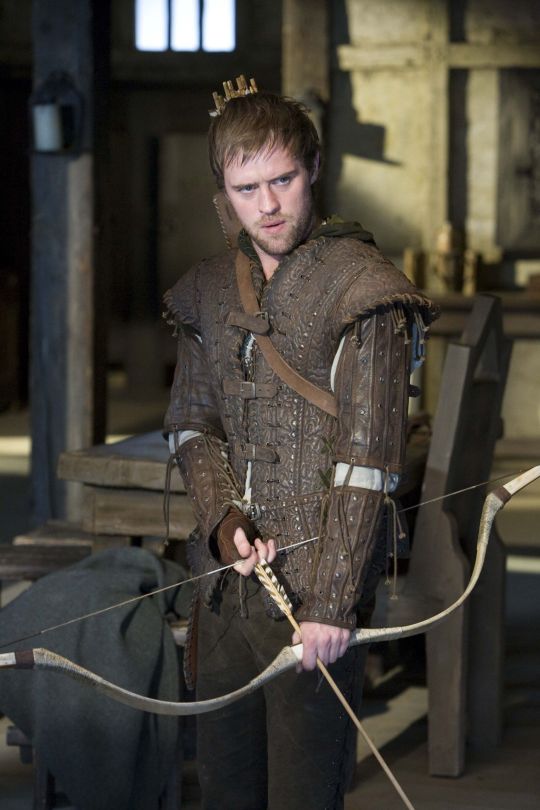
So, back to the original question: What's the difference between Charles Vane in Black Sails, and Edward Teach in Our Flag Means Death?
Simply put, it's intention. There is nothing intentional about Vane's leather in Black Sails. It's not the only leather in the show, and it only says what all shabby period leather says, relying on the same tropes as fantasy armour: he's a bad boy and a fighter in workaday leather, poor, flexible, and practical. None of these connotations are based in reality or history, and they've been done countless times before. It's boring design, neither historically accurate nor particularly creative, but much the same as all the other shabby chic fighters on our screens. He has a broad lineage in Lord of the Rings and Pirates of the Caribbean and such, but that's it.
In Our Flag, however, the lineage is much, much more intentional. Ed is a direct homage to Mad Max, the costuming in which is both practical (Max is an ex-cop and road warrior), and draws on punk and kink designs to evoke a counterculture gone mad to the point of social breakdown, exploiting the thrill of the taboo to frighten and titillate the audience.
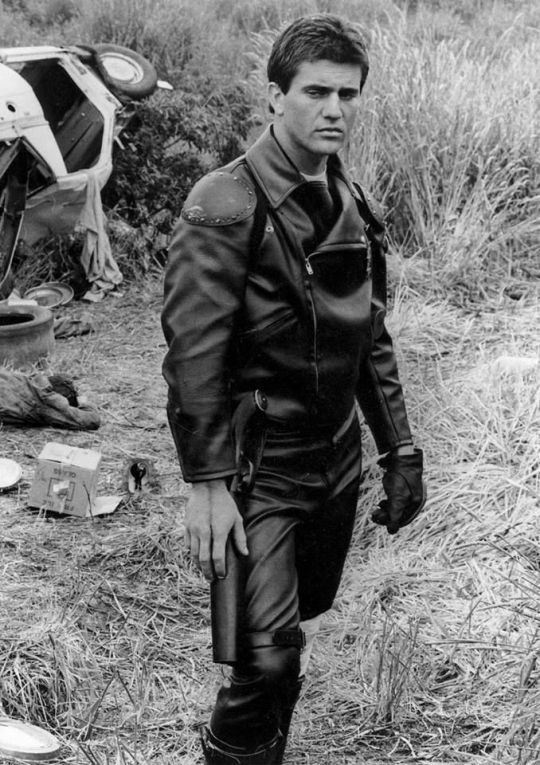
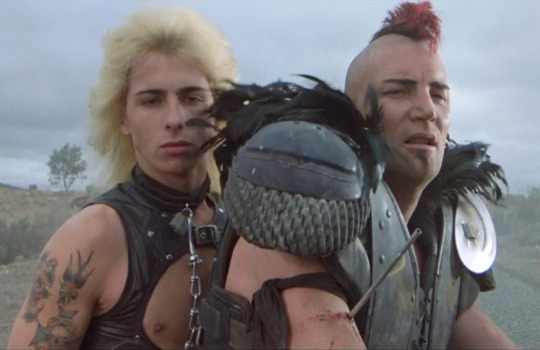
In particular, Ed is styled after Max in the second movie, having lost his family, been badly injured, and watched the world turn into an apocalypse. He's a broken man, withdrawn, violent, and deliberately cutting himself off from others to avoid getting hurt again. The plot of Mad Max 2 is him learning to open up and help others, making himself vulnerable to more loss, but more human in the process.

This ties directly into the themes of Our Flag - it's a deliberate intertext. Ed's emotional journey is also one from isolation and pain to vulnerability, community, and love. Mad Max (intentionally and unintentionally) explores themes of masculinity, violence, and power, while Max has become simplified in the popular imagination as a stoic, badass action hero rather than the more complex character he is, struggling with loss and humanity. Similarly, Our Flag explores masculinity, both textually (Stede is trying to build a less abusive pirate culture) and metatextually (the show champions complex, banal, and tender masculinities, especially when we're used to only seeing pirates in either gritty action movies or childish comedies).
Our Flag also draws on the specific countercultures of motorcycles, rockers, and gay/BDSM culture in its design and themes. Naturally, in such a queer show, one can't help but make the connection between leather pirates and leather daddies, and the design certainly nods at this, with its vests and studs. I always think about this guy, with his flat cap so reminiscient of gay leather fashions.

More overtly, though, Blackbeard and his crew are styled as both violent gangsters and countercultural rockstars. They rove the seas like a bikie gang, free and violent, and are seen as icons, bad boys and celebrities. Other pirates revere Blackbeard and wish they could be on his crew, while civilians are awed by his reputation, desperate for juicy, gory details.
This isn't all of why I like the costuming in Our Flag Means Death (especially season 1). Stede's outfits are by no means accurate, but they're a lot more accurate than most pirate media, and they're bright and colourful, with accurate and delightful silks, lace, velvets, and brocades, and lovely, puffy skirts on his jackets. Many of the Revenge crew wear recognisable sailor's trousers, and practical but bright, varied gear that easily conveys personality and flair. There is a surprising dedication to little details, like changing Ed's trousers to fall-fronts for a historical feel, Izzy's puffy sleeves, the handmade fringe on Lucius's red jacket, or the increasing absurdity of navy uniform cuffs between Nigel and Chauncey.
A really big one is the fact that they don't shy away from historical footwear! In almost every example above, we see the period drama's obsession with putting men in skinny jeans and bucket-top boots, but not only does Stede wear his little red-heeled shoes with stockings, but most of his crew, and the ordinary people of Barbados, wear low boots or pumps, and even rough, masculine characters like Pete wear knee breeches and bright colours. It's inaccurate, but at least it's a new kind of inaccuracy, that builds much more on actual historical fashions, and eschews the shortcuts of other, grittier period dramas in favour of colour and personality.
But also. At least it fucking says something with its leather.
#everyone say 'thank you togas' for not including a long tangent about evil rimmer in red dwarf 5x05#Our Flag Means Death#Togas does meta#and yes these principles DO fall apart slightly in s2 and i DON'T like those costumes as much#don't get me wrong they're fun and gorgeous - but generally a bit less deep and more inaccurate. so. :(#I'm not sure this really says anything new about Our Flag but I just needed to get my thoughts out#i hate hate hate Gritty Period Drama costumes they're so boring and so ugly and so wrong#god bless OFMD for using more than 3 muted colours and actually putting men in heels (and not as a shorthand for rich/foppish villainy) <3#looking at that Tudors still is insane like they really will go to any lengths to not make men feel like they've got bare legs XD#image descriptions in alt text#and yes i DID just sink about two hours into those so you'd better appreciate them
1K notes
·
View notes